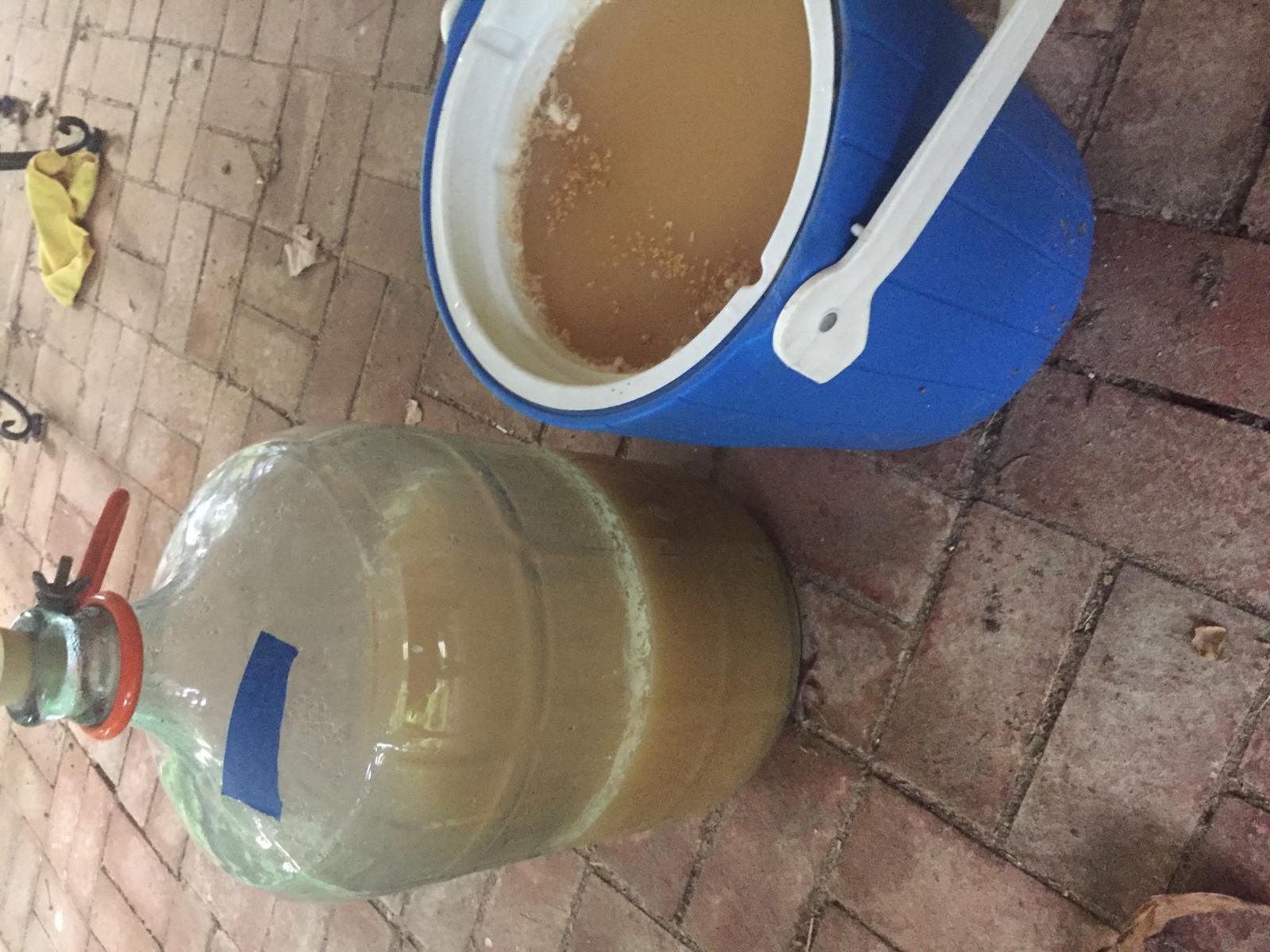MizzouFermentationScience
Hanseniaspora ebrius
I regularly do "wild" ferments but I'm making the my first sour. I put Wild in quotes because I don't sanitize my fermenters properly, I count on the commercial strains I use from time to time to contaminate my beers and finish the ferms. Typically I leave the kettle outside post boil overnight then transfer to fermentor. On Saturday I skipped the boil step and threw some grain in an unsanitzed cooler I bought at a thrift shop with half the wort, the other half in a carboy. I was planning on doing a kettle sour and reboil, but the lacto culture I was building from buttermilk wasn't ready so I just left the wort outside for three days in 90 degree heat. OG was 1.060, when I checked today it was roiling and gravity was 1.018. Taste was wonderfully sour, the carboy was contaminated with saison yeast but the cooler was incredibly fruity- like fermenting wine. I moved them to a ferm bucket with some dry hops, hopefully to suppress the lacto while ferm finishes. So much for boiling. I think I'm addicted to the randomness, my version of a gambling problem.







![Craft A Brew - Safale BE-256 Yeast - Fermentis - Belgian Ale Dry Yeast - For Belgian & Strong Ales - Ingredients for Home Brewing - Beer Making Supplies - [3 Pack]](https://m.media-amazon.com/images/I/51bcKEwQmWL._SL500_.jpg)




















































